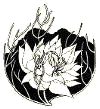
Home
Mission
Overview of Project
Project Staff
Sponsors
Achievements
Checking, Illustrations
Upcoming Activities
Id and Species Lists
Protea Information
Protea Gallery
Growing Proteas
Interim Dist. Maps
Publications
Afrikaanse Inligting
![]()
Filling in the Sight Record Sheets (2) locality box tedium
 I have been quite busy filling in SRS this quarter, and I
find the Locality Box takes forever. I do not mind the field recording, but the
"Further details of locality" and "Distance from
nearest named place" fields are tedious: a weekends atlassing requires
two or three nights of measuring and coding localities. To me this is the
biggest inconvenience of the entire process! Is it not possible to only fill in
the Latitude and Longitude coordinates in the SRS? The other fields are
superfluous once one knows the position on the map.
I have been quite busy filling in SRS this quarter, and I
find the Locality Box takes forever. I do not mind the field recording, but the
"Further details of locality" and "Distance from
nearest named place" fields are tedious: a weekends atlassing requires
two or three nights of measuring and coding localities. To me this is the
biggest inconvenience of the entire process! Is it not possible to only fill in
the Latitude and Longitude coordinates in the SRS? The other fields are
superfluous once one knows the position on the map.
Jan Vlok, De Rust
As the major contributor of SRS to date, I am especially aware of the time it takes to fill in the locality box. However, I have now streamlined my processing, mainly by doing the map work separately from the rest of the SRS, so that I can complete a long weekends hiking (20-60 SRS) in 2-3 hours. Notwithstanding this, we require detailed locality data for a variety of reasons:
- The coordinates and altitude are essential data. The Geographic Information System (GIS) which we are using to manipulate the data on the computer uses these three numbers (longitude, latitude and altitude) to determine the record locality's position on the earth's surface.
- "Distance to, direction from, and nearest named place" is our quick reference to ensure that your coordinate and altitude data are correct. This is our assurance against minor errors (like transpositions: 33"44'.94 instead of 34"34'.94, or forgetting to convert altitude from feet to metres).
- "Further details of location" was
designed to enable anyone to go to the exact spot at which you filled in
your SRS. This may be because your record is queried (very exciting or
strange), requires a herbarium specimen, because some scientist/
conservationist/ horticulturist wants to study the species and is looking
for a suitable locality, etc.
It is also a means of determining which of the fields you incorrectly filled in when your "coordinate data" and "distance to" data do not match up correctly.
It will also form part of our gazetteer, a geographical index of place names. South Africa is sorely lacking a good detailed gazetteer, the best available having been done for the CIA a few decades ago.
Given the above objectives, and that, for some atlassers, the locality box takes too long to fill in, the following procedure is an acceptable alternative. But only fOr data from 1:50 000 SCALE MAPS! For other map scales the Locality Box should be filled out in full.
- Fill in the coordinates and altitude from your map.
- Fill in the full details in the "Further details of location" field. Please remember to include the farm name (the ones in grey on the 1:50 000 scale maps). E.g.: E-end Witbank456 on slopes above junction wilge + hantams R Ridge E of TB769 above rl tunnel Lebanon358
- Photostat the section of the map (without any reduction or enlarging) and mark each locality with an "X" and its locality number for the day. Staple it to the back of the first SRS (XXX-000000-01) for the day. Photostats must be 1:50 000 scale maps (including Peter Slingsby's or modified survey maps).
Please use a different photocopy for each new days atlassing (your sheets will be filed in batches per day). Thus, if you took three days to complete the Boland Trail, please provide three maps. This will enable us to check your coordinates and altitude by providing us the information required to relocate your record locality, either in the field or on a map.
This procedure has the added benefits of encouraging you to make photocopies of your route during the planning stages, thus allowing you to plan your route more carefully, to record the exact locality en route, and saving you the expense of soiling or losing your original maps. We will provide photocopies of 1:50 000 maps, if you can specify the exact area you intend visiting (See PAN 13.4).
In addition, we can provide you with a list of protea species which might occur in the area. Please allow sufficient time for postage!
Tony Rebelo, Bellville
Back PAN 14